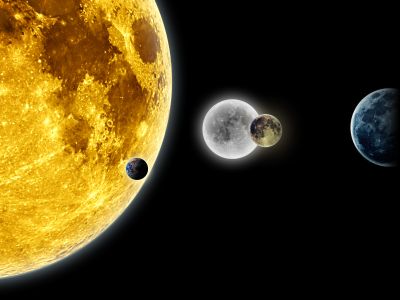Russia's "artificial star" launched reflects sunlight and shines dazzling than Venus, but there is also concern that bad effects on astronomy will occur

On July 14, 2017, one satellite was launched from the Baikonur base in Kazakhstan. It is an artificial satellite that spreads sail in outer space and reflects sunlight, developed by Russian researchers, but there are concerns that scientists will adversely affect the space observation, a controversial thing It is.
Russian Scientists Just Launched An "Artificial Star" That Could Threaten Astronomy | IFLScience
http://www.iflscience.com/space/russian-scientists-just-launched-a-controversial-artificial-star-that-might-anger-astronomers/all/
The satellite "Маяк (Mayak)" that was launched was planned and developed by researchers at Moscow State University, and funded by Russian cloud funding service "Boomstarter" about 2 million rubles (about 3.8 million yen) The project was promoted collecting. Mayak is a very small cube-shaped satellite, the sail was launched in a collapsed state, and it is completely deployed over several days after orbital injection. The aim of this launch is to "launch a brilliant artificial satellite by receiving sunlight and attract people's interests to the universe," and "technology to drop debris (space debris) to the earth by utilizing resistance by the atmosphere Test of ". Investors in Cloud Funding can know the location of MayakSmartphone applicationIs to be provided.

Mayak was launched into space with other 72 small satellites by the Russian Soyuz launch vehicle and was launched into orbit around the earth at an altitude of 600 km. After launch, the sail made of the curtain of the thinness of one-twentieth of the hair is spread out like a pyramid-shaped triangular puff and it reflects sunlight. Since the area of the sail is 16 square meters in total, the area per surface is 4 square meters, if it is a simple calculation the length of one side is about 1.3 meters.

However, among the researchers on the universe, there are voices concerned about the adverse effects caused by Mayak. The team estimates that Mayak will shine in the night skygradeIt is said that it will be minus 10 grade if it reverts to. This is brighter than Venus, it is the scale corresponding to the third brightest object next to the Sun / Moon. Even if we estimate the brightness to a lesser extent, it is expected that after the Venus it will be a minus 3 grade of the same brightness as Mars.
It is believed that this brightness could affect the surveys carried out by astronomers. Especially, there is concern about the influence in searching all skies to investigate the entire sky. Nick Howes, former Director of the Kielder Observatory in Northumberland, England said, "The brightness is a problem and other artificial satellites that interfere with the International Space Station are relatively small, playing a scientific mission "It is a performance, but this is just a performance," they showed a negative view, "They pushed the launch against the opposite voice from the astronomical community. Speaking of what we can hope at the moment, There is no choice but to hope that the plan of failing and brightening our dark night sky will not be executed. "
On the other hand, astronomers predict that there is little influence in practice. Michael Wood-Versey of the University of Pittsburgh said: "There will not be much impact, since Mayak will be around the boundary line between daytime and night, it will be lower than the horizon and the horizon, so see it I think that is difficult. "
Although Mayak's launch, which is said to have little influence in practice, it is rather a matter of concern that the example of this time is a precedent, and the launch of a satellite that may further affect in the future will be carried out It seems to be in the place.
Related Posts:







